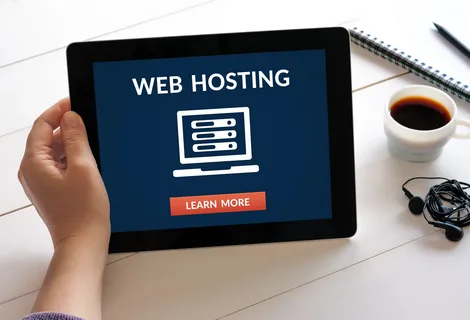The Ultimate Guide to Webinar Hosting
Mastering Webinar Hosting: Your Ultimate Guide to Successful Online Events

Webinar hosting has emerged as a crucial tool in the digital marketer’s arsenal. With the ability to reach a global audience from the comfort of your own office, webinars offer unparalleled opportunities for engagement, education, and lead generation. But what exactly is webinar hosting, and why has it become so vital in today’s digital landscape?
What is a Webinar?
A webinar, short for web seminar, is an online event that is hosted by a company or individual and broadcast to a select group of individuals through their computers via the Internet. It is a powerful way to present information, conduct training, and engage with an audience in real time.

Types of Webinars
Webinars can take many forms, including educational sessions, product demonstrations, training workshops, and panel discussions. Each type serves a specific purpose and can be tailored to meet the unique needs of your audience.
Benefits of Hosting Webinars
Expanding Reach
One of the primary advantages of hosting webinars is the ability to reach a wide and diverse audience. Unlike traditional seminars that are limited by geographical constraints, webinars can be accessed by anyone with an internet connection.
Cost-Effective Marketing
Webinars are a cost-effective way to reach your target audience. They eliminate travel and venue expenses, allowing you to allocate your budget toward creating high-quality content and marketing efforts.
Enhancing Brand Authority
Hosting informative and valuable webinars can position your brand as a thought leader in your industry. This builds trust and credibility with your audience, which can translate into increased loyalty and sales.
Identifying Your Audience
Understanding who your audience is and what they are interested in is crucial for the success of your webinar. Conduct market research and create detailed audience personas to tailor your content to their needs and preferences.
Setting Goals and Objectives
Clearly defined goals and objectives will guide your webinar planning process. Whether you aim to educate, generate leads, or promote a product, having specific targets will help you measure your success.
Choosing the Right Topic
Select a topic that is relevant and valuable to your audience. Consider current trends, common pain points, and frequently asked questions within your industry to ensure your content resonates with attendees.
Key Features to Look For
When choosing a webinar platform, consider features such as ease of use, scalability, interactive tools (like polls and Q&A), and integration capabilities with other software.
Popular Webinar Platforms
Some of the most popular webinar platforms include Zoom, GoToWebinar, WebinarJam, and Microsoft Teams. Each platform has its own set of features and pricing plans, so choose one that best fits your needs.
Structuring Your Presentation
A well-structured presentation keeps your audience engaged and makes it easier to convey your message. Start with a compelling introduction, followed by the main content, and end with a strong conclusion.
Utilizing Visuals and Multimedia
Incorporate visuals such as slides, videos, and infographics to make your presentation more dynamic and engaging. Visuals help to illustrate your points and keep the audience’s attention.
Incorporating Interactive Elements
Interactive elements like polls, Q&A sessions, and live chats encourage audience participation and make your webinar more engaging. These tools also provide valuable feedback and insights.

Email Marketing Strategies
Email marketing is one of the most effective ways to promote your webinar. Send out invitations, reminders, and follow-up emails to keep your audience informed and engaged.
Social Media Promotion
Leverage social media platforms to spread the word about your webinar. Create engaging posts, use relevant hashtags, and encourage your followers to share the event with their networks.
Collaborations and Partnerships
Partnering with other businesses or influencers can help extend your reach and attract a larger audience. Co-hosting a webinar with a partner can also add value to your content.
Ensuring Reliable Internet Connection
A stable internet connection is critical for a smooth webinar experience. Test your connection beforehand and have a backup plan in case of technical issues.
Audio and Video Equipment
Invest in good-quality audio and video equipment to ensure clear communication. Test your equipment before the webinar to avoid any technical difficulties.
Performing Dry Runs
Conduct dry runs to practice your presentation and troubleshoot any technical issues. This will help you feel more confident and ensure everything runs smoothly on the day of the webinar.
Best Practices for Presenters
Be well-prepared, speak clearly, and maintain a professional demeanor. Engage with your audience by addressing them directly and encouraging interaction.

Engaging with the Audience
Keep your audience engaged by asking questions, encouraging participation, and responding to comments and questions in real time.
Handling Q&A Sessions
Q&A sessions provide an opportunity to address your audience’s concerns and clarify any points. Be prepared to answer questions and manage the session effectively.
Following Up with Attendees
Send follow-up emails to thank attendees, provide additional resources, and gather feedback. This helps to maintain engagement and build relationships with your audience.
Analyzing Webinar Performance
Review the webinar metrics to assess its success. Look at attendance rates, engagement levels, and feedback to identify areas for improvement.
Repurposing Webinar Content
Repurpose your webinar content into blog posts, social media updates, or on-demand videos. This extends the lifespan of your content and reaches a broader audience.
Technical Issues
Technical problems such as poor internet connection or malfunctioning equipment can disrupt your webinar.
Low Attendance Rates
Despite your best efforts, sometimes attendance rates may be lower than expected.
Engaging a Distracted Audience
Keeping your audience engaged throughout the webinar can be challenging, especially if they are multitasking.
Solutions for Technical Problems
Have a backup plan in place, such as an alternative internet connection or spare equipment, to minimize disruptions.
Strategies to Boost Attendance
Increase your webinar attendance by optimizing your promotion strategies, offering incentives, and selecting a convenient time for your audience.

Techniques for Audience Engagement
Use interactive tools, tell compelling stories, and keep your content concise and focused to maintain audience interest.
Example 1: A Marketing Masterclass
A company hosted a marketing masterclass that attracted over 1,000 attendees. They used interactive polls, provided valuable insights, and followed up with detailed resources.
Example 2: A Product Launch Event
A tech company successfully launched a new product through a webinar, engaging its audience with live demos and exclusive offers.
AI and Automation
Artificial Intelligence and automation are set to revolutionize webinar hosting by providing personalized experiences and automating repetitive tasks.
Interactive and Immersive Experiences
Future webinars will likely incorporate more interactive and immersive experiences, such as virtual reality and augmented reality, to enhance engagement.
Conclusion
Webinar hosting is a powerful tool for reaching and engaging with your audience. By understanding the key elements of planning, promoting, and executing a successful webinar, you can leverage this platform to achieve your business goals. So, what are you waiting for? Start planning your next webinar today!

FAQs
How can I increase webinar attendance?
Increase attendance by promoting your webinar through multiple channels, offering incentives like exclusive content or discounts, and sending reminders to registrants.
What are the essential tools for webinar hosting?
Essential tools include a reliable webinar platform, good quality audio and video equipment, and interactive tools like polls and Q&A features.
How long should a webinar be?
A typical webinar lasts between 45 minutes to an hour. This duration is long enough to cover the content in-depth without overwhelming the audience.
Can webinars be monetized?
Yes, webinars can be monetized through various methods such as charging a registration fee, offering paid on-demand access, or using the webinar to promote paid products or services.








